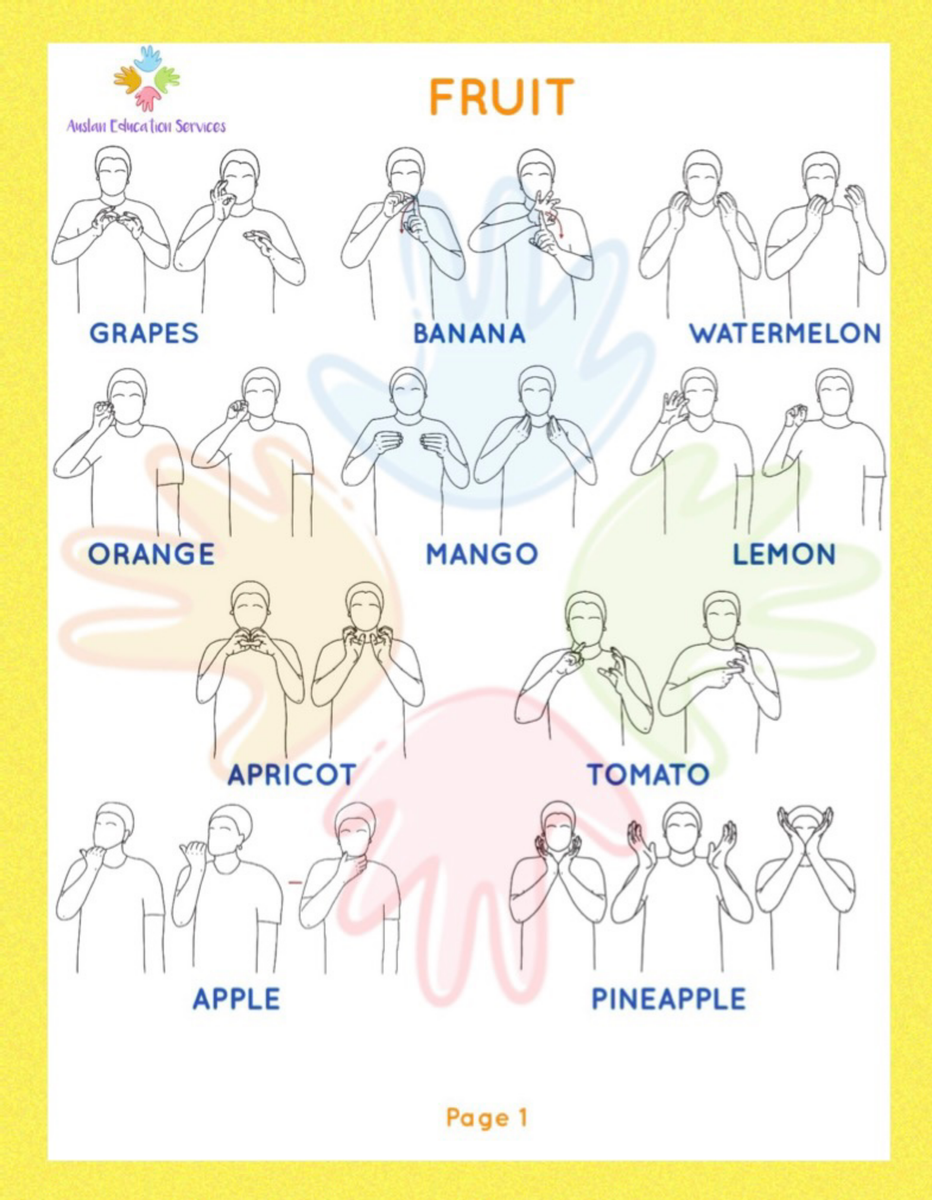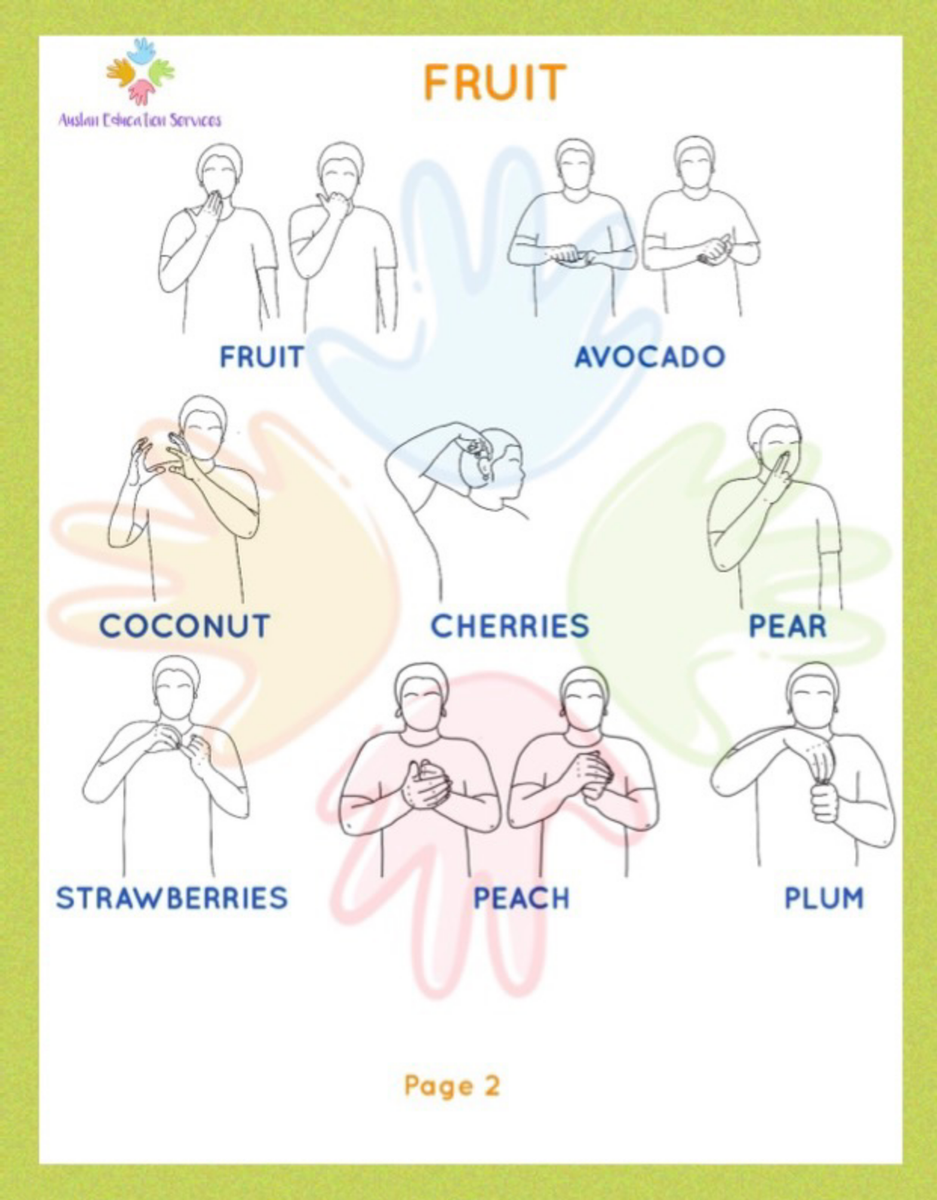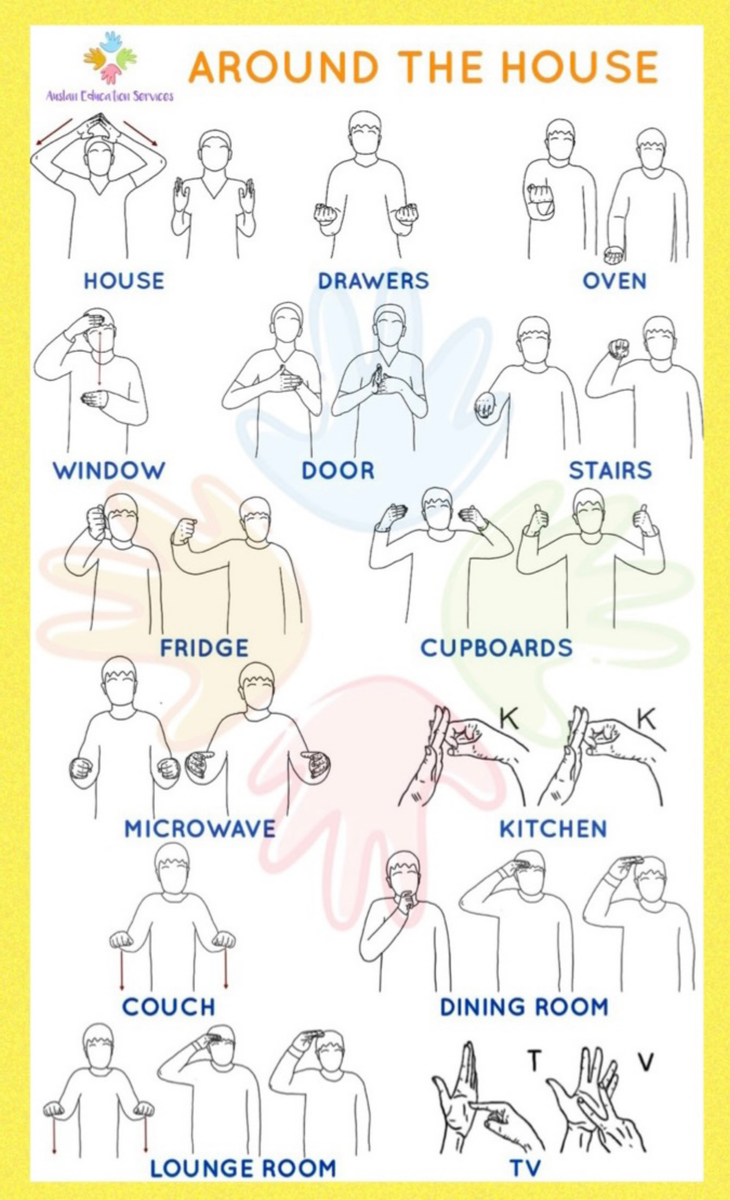Auslan

From Caen & Simone, Auslan Teachers
Real Life Application
We can hardly believe we’re already at the halfway point of the term. Time has flown by, and we are thrilled with the progress students have made in their Auslan learning. Over the past few weeks, we’ve explored two exciting and practical new topics: Fruits and Things Around the House. These units have not only built students’ vocabulary but also encouraged them to start applying their Auslan in everyday contexts—at home, during conversations, and even while out and about!
Fruits
Our fruit unit has been vibrant, fun, and full of opportunities to link Auslan to the real world. Students learned to sign a variety of fruits, from the everyday (apple, banana, orange) to the more unique (pineapple, mango, watermelon).
To bring this learning to life, we:
Discussed real-life application – Students explored how they could use these signs at home or during grocery shopping trips. We encouraged them to sign along with parents or caregivers while picking out fruit or setting the table at snack time.
Played the classic ‘Fruit Salad’ game – This fast-paced Auslan version of musical chairs helped students quickly recognise and react to signed fruit names, building their receptive fluency.
Completed a colourful fruit bowl activity – Students created their own illustrated fruit bowls and used Auslan to present their work, describing the colours, types, and quantities of fruit. This gave them the chance to practise sentence construction and descriptive language.
This unit has been particularly successful in giving students functional vocabulary—words they can use in daily life—and many students were excited to try these signs outside the classroom.
Things Around the House
Next, we moved into a topic that felt close to home—literally! Learning Auslan signs for items and rooms around the house helped students expand their ability to describe familiar environments and use Auslan more expressively.
To make this topic engaging and interactive, we:
Built our Dream Homes – In groups, students planned and created their own “dream house” layouts, adding labelled drawings and then describing their homes using Auslan. This activity brought creativity into the classroom and gave students practice in explaining spatial relationships, a key skill in Auslan.
Reviewed familiar vocabulary – This topic also served as a natural way to revise signs learned earlier in the year, including colours, animals, and furniture from previous units. It was a great example of how new learning can be connected to what we already know.
Practised conversations – Students role-played giving tours of their homes, using full sentences, and including non-manual features (NMF) to add meaning and clarity to their signing.
Auslan is a visual and expressive language that comes alive through everyday practice. In this newsletter, we have attached some posters for home use!
Here are a few simple ways to help your child use Auslan at home:
- Ask your child to sign different fruits at snack time
- Go on a “sign scavenger hunt” around the house
- Have your child give you a signed “tour” of your home
We’re so proud of how much our students have achieved so far this term. Their creativity, teamwork, and willingness to learn are shining through in every lesson. We’re excited to continue our learning journey with even more exciting topics to come!
Thank you, as always, for your continued support of Auslan in our school community.



